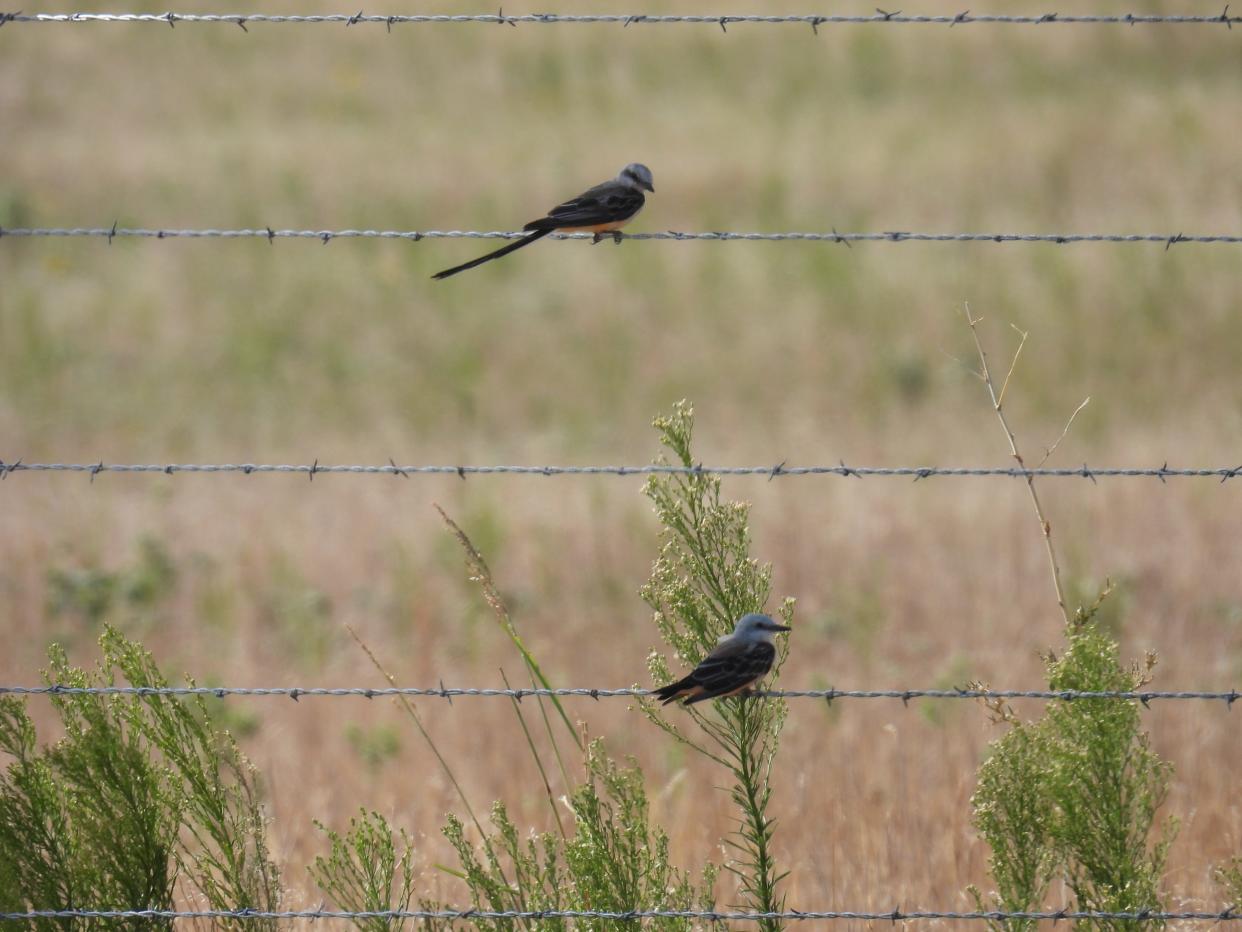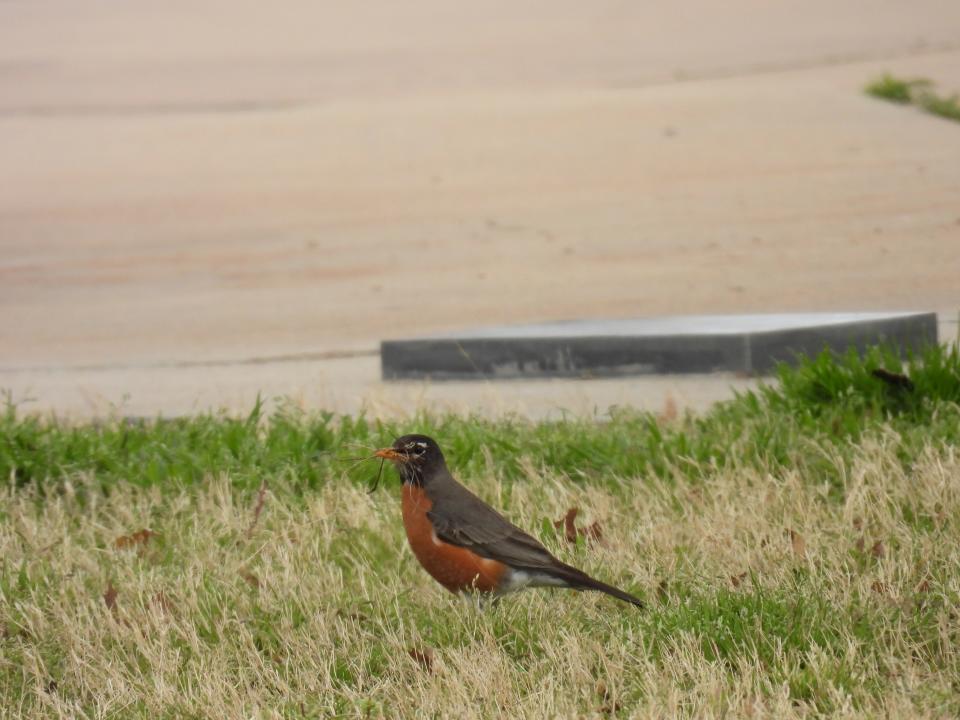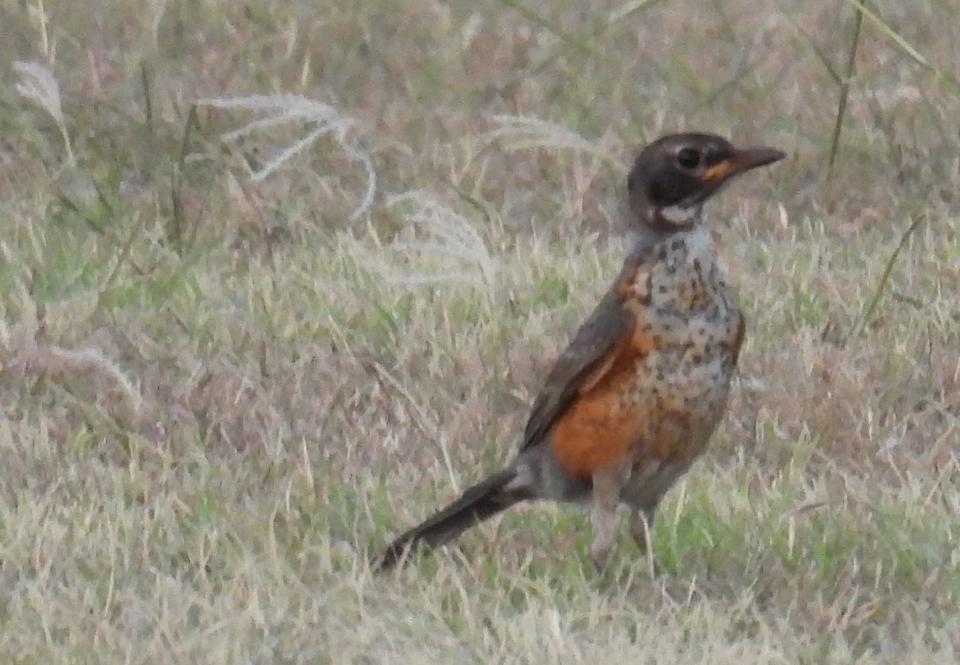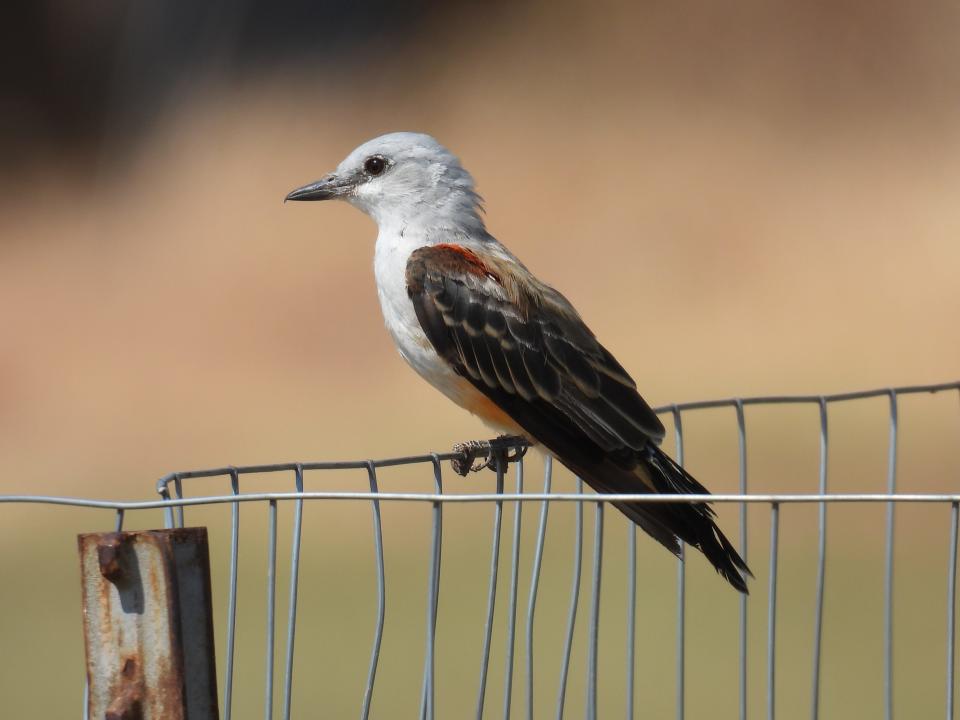Odd bird: A confusing season for birders

- Oops!Something went wrong.Please try again later.
Because of my interests in nature and wildlife, I subscribe to a social media site devoted to the Birds of Texas. Members post photos of birds and ask questions ranging from identification (ID) requests to queries about care, competition among and between birds, habitats, and preferred diets. I’ve lately noticed an increased number of what I sometimes call “fuzzy IDs” and requests for confirmation and information about “strange-looking” birds! Some of the expert birders, who are members of this group, have been able to clarify and/or correct most of these IDs. Finding strange-looking birds is normal for this time of year (and through the fall); but these odd-looking individuals can be challenging for birders and nature observers!

Except for a few photos of birds with leucistic or melanistic plumages, almost all of the puzzling photos on the social media site are related to certain types of birds that presently are occurring in high numbers. Recall that the birds presently found in our area have recently completed their annual mating, nesting, egg brooding, and fledging activities, and you can likely guess which ‘types’ of birds are causing the ID problems! If you guessed that it is the large number of newly-fledged, immature birds that are problematic (sounds familiar if you are a parent!) you are correct! The youngsters of many birds look quite different in terms of their sizes, feather shapes, colors, and patterns from their parents and without careful observation and consideration (taking into account the surrounding avian fauna) this variation can easily result in misidentifications.

Acclaimed artist, author, and naturalist David Allen Sibley states that almost all mistakes and misidentification of birds result from flaws in how we perceive birds in the wild. Many factors (including light levels, viewing angles, time of day, differences in postures and head shapes, season of the year, and duration of the sighting) can contribute to mistaken identifications. Considering all of these factors, anyone can err on identifications! In order to minimize errors, remember to carefully consider the identifying features and characteristics of birds when attempting IDs. However, as Sibley points out, we should also remember that every bird is an individual and, thus, may vary in the characteristics shown by an ‘ideal’ painted or photographed image of a particular bird in a field guide. The juveniles of many species are excellent examples of this variation; but that’s all part of the fun of birding activities during this season!

With some exceptions, birds reach adult sizes within a few weeks of hatching. Smaller songbirds, such as Chickadees and Wrens, reach adult size at approximately one month of age; whereas, larger birds, such as the Red-tailed Hawk and Great Blue Heron, may take three months or longer to attain adult sizes. It is often difficult to accurately judge size if the birds are isolated or are observed when backlit. Strong backlighting can give an observer the impression that a bird is larger and/or ‘thinner’ than its actual size and shape.
The greatest challenges encountered when attempting to correctly ID immature birds are probably the variations of their feathers, colors, and patterns when compared to their parents! Additionally, many types of birds (such as eagles, gulls, and hawks) require more than one year to attain their final (sometimes called ‘definitive’) adult plumage and the 1st year, 2nd year, etc. plumage colors and patterns differ from fully mature adults! Fortunately, many species of passerines (perching and song birds) attain definitive, adult plumage within a single year and/or their youngsters molt their first feathers for a ‘first basic’ set that are often similar to the colors and patterns of their mothers!
To determine if you are observing an immature bird, look for signs of fading colors or wear on the ends of the feathers and any differences in colors of the primary (longer flight), secondary, and tertial feathers (for example, mixed black and brown feathers). Also, if the bird has a ‘messy’ overall appearance, this may indicate that it is in the process of molting. Interestingly, pale colored feathers are most susceptible to wear and fading; whereas, darker colored feathers are more resistant! A useful clue in determining a bird’s age in late summer and fall (as pointed out by David Allan Sibley) is that juveniles usually have very uniform, fresh plumage; whereas, adults are actively molting and have a mixture of old and new plumage.
Now let’s discuss some familiar area birds to exemplify differences between parents and youngsters! Two species which have successfully nested and fledged young near my home are Scissor-tailed Flycatchers and American Robins. The characteristics of the adult birds are quite distinctive and recognizable; whereas, the same characteristics of youngsters are intermediate or missing! The most distinguishing characteristic of Scissor-tailed Flycatchers is probably their long, forked tail feathers. Immature Scissor-tailed Flycatchers lack lengthy tail feathers and have less defined pink areas on their bellies. The youngsters also appear to have larger heads and blockier bodies when compared to adults and, because the immature birds lack extended tail feathers, flight and foraging activities of young Scissor-tailed Flycatchers appear less graceful than adults! Young Scissor-tails resemble Western Kingbirds but the heads and bellies of the young Scissor-tails are paler in color.
Young American Robins appear (at least to me) more slender and ‘lanky’ than their parents and their characteristic red breasts and bellies are, at best, incomplete. In fact, much of the young Robin’s breast and belly is white to gray colored and distinctly spotted! The backs of youngsters are mottled and their facial patterns are less distinct. The bills of adults are yellow to orange; but the bills of immature Robins are mostly gray with streaks of yellow near the base of the lower bill.
Red-tailed Hawks can be problematic because they molt one time per year and young hawks retain their first set of true feathers (sometimes called their ‘juvenal’ plumage) throughout their first year of life. Adults display distinctive ‘red tails’; but youngsters have a mix of adult and juvenal feathers and brown, striped tails! Most young Red-tailed Hawks do not acquire all their adult feathers, patterns, and red tails until they are approximately 2.5 years old! This molting pattern and their multiple ‘color morphs’ (from pale forms to the very dark Harlan’s Hawk color morph) make positive identification of some Red-tailed Hawks much more challenging!
In conclusion, don’t despair if (or when) you can’t quite ‘nail down’ a positive ID of an area bird! Remember that birds are living, dynamic, animals and must grow and mature into adults: often dramatically changing their appearances in the process! Birding is similar to a sport; but it is also an enjoyable, recreational activity. Similar to many sports and recreational pursuits, practice and time help increase your knowledge, skill, success, and enjoyment of Birding and our area avian fauna! Get out there and enjoy and don’t fret too much over ‘strange-looking’ birds!
Jim Goetze is a retired professor of biology and former chairperson of the Natural Sciences Department of Laredo College with an avid interest in all aspects of the natural world. He can be contacted at gonorthtxnature@gmail.com
This article originally appeared on Wichita Falls Times Record News: Odd bird: A confusing season for birders

